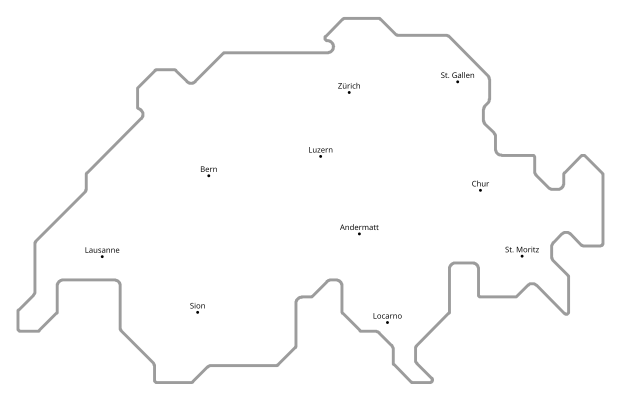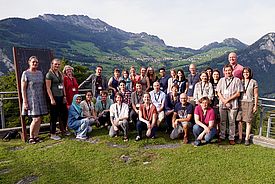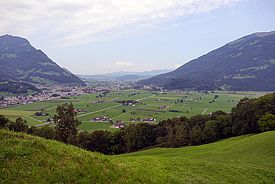11.09.2017 | News
During a summer school focusing on land system science, a group of young scholars from around the world spent an entire week getting to grips with data, tools and models for analysing landscape patterns and processes. The studies centred on the Linth Plateau.
The view of the Linth Plateau from the Kerenzerberg, the Gäsi camp site on Lake Walen, the reed beds of Kaltbrunn and the river widening project at Hänggelgiessen – places that are rarely mentioned in Swiss guide books. For a week at the end of August, however, all of these places on the Linth plateau, which extends from Lake Walen to Lake Zurich, were on the itineraries of 24 young land system scientists from right across the globe. The region provided material for case studies and served as the venue for this year’s inaugural summer school in land system science, hosted by Swiss Federal Research Institute WSL.
During their stay, the junior scholars familiarised themselves with data, tools and models that are used to analyse landscape patterns and processes, such as urbanisation and the fragmentation of the landscape by transportation routes. Despite the wide range of countries represented by the attendees, including Iran, Pakistan, Vietnam, Sweden and the USA, differences between landscapes are not enormous. “Although the structure of Swiss settlements is completely different from the Iranian model, the landscape and the complex interactions between people and nature are very similar,” explains Shekoufeh, a PhD candidate at the University of Isfahan.
The summer school was conceived and organised by the two WSL landscape researchers Janine Bolliger and Silvia Tobias, whose aim was to present to the students as many of the relevant analytical methods and tools as possible. The attendees gained practice in using data captured by remote sensing, learned how to model various types of land use with computers, how to visualise landscape changes and explored ways of utilising future land use scenarios produced with the aid of the local population. They were also given an insight into the role that science can play in enabling practitioners to make decisions concerning sustainable land utilisation.
Nurturing young scholars has practical benefits as well
The summer school concluded with a presentation by the attendees of landscape research proposals for the Linth Plateau. Janine Bolliger was delighted that the students included so many of the tools explored during the week in their project proposals. The attendees also reviewed the week’s teaching in a positive light. Mahsa, who is comparing urban green spaces in Iran and Switzerland in her doctoral thesis, commented, “This was the first time that I had encountered GIS data, and I can now use the acquired skills in my own work.”
By hosting the summer school, which was established in collaboration with the Global Land Programme, the Universities of Wageningen and Amsterdam, and the Centre for Development and Environment (CDE) at the University of Bern, the WSL Landscape Centre is making a crucial contribution to the education of land system scientists. The long waiting list of students who were unable to attend on this occasion bears witness to the interest in such an event. Another land system science summer school is expected to take place in 2019, from 7 until 12 July, immediately after the 2019 IALE World Congress in Milan.
[Translate to Englisch:] Kontakt
)
Copyright
WSL and SLF provide the artwork for imaging of press articles relating to this media release for free. Transferring and saving the images in image databases and saving of images by third parties is not allowed.


